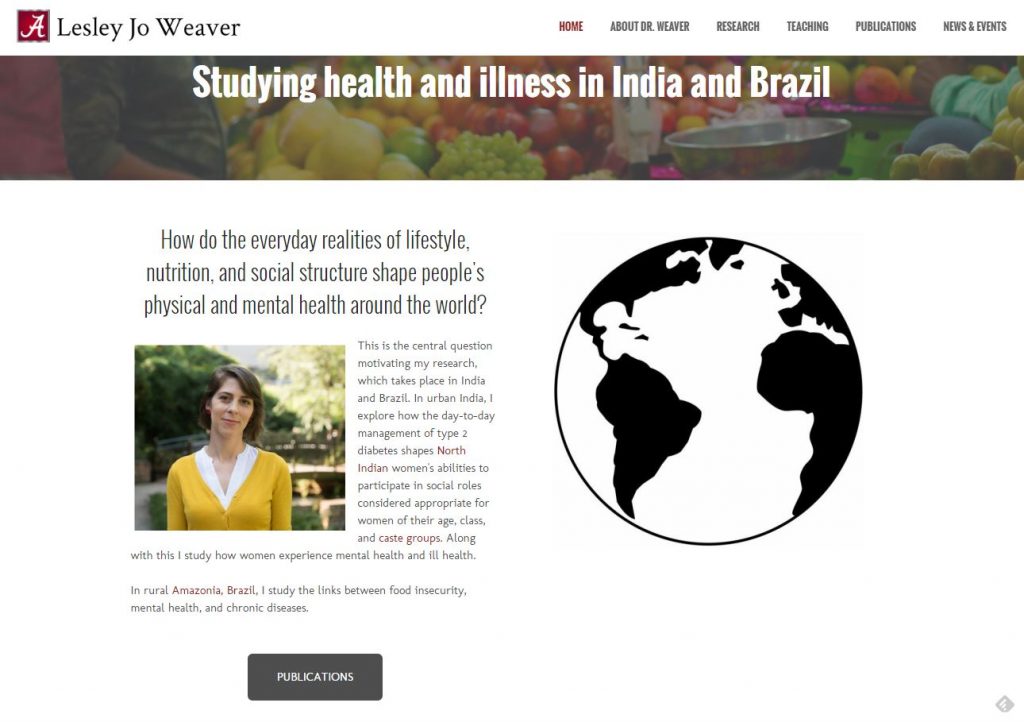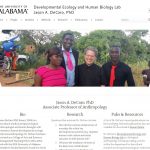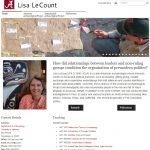
by Lesley Jo Weaver, Department of Anthropology
As a group, academics have been relatively slow to recognize the importance of maintaining a professional online presence. Perhaps this is because many of us imagine that the “real” work we do is mental, internal, and focused on ideas rather than personae. Fortunately for us and everyone else, this is changing. Professional networking websites, such as LinkedIn, Academia.edu, and ResearchGate provide ready-made templates for academics to present their professional accomplishments, while public discussion of online presence management is increasingly cropping up in forums such as the Chronicle of Higher Education’s Vitae, The Professor Is In, and Inside Higher Education. Most of these sources highlight the importance not only of participating in professional networking sites like those mentioned above but also of maintaining a website dedicated entirely to one’s own work.
At UA, the people.ua.edu initiative provides all faculty and graduate students the opportunity to create a polished, professional website that meets accessibility and University content and branding requirements. Fortunately for those of us who know nothing about website construction, they use an easy drag-and-drop website builder called Weebly. One of the first things I did when I came to UA in 2014 was to create my website, and with the help of the fantastic folks in Multimedia Services, this was a downright enjoyable process. Mind you, I have no background in website design or website creation software.
My website looked so fantastic that my departmental colleagues started developing website envy, so last year, I spearheaded an effort to get the entire anthropology faculty involved in people.ua.edu. The process was easy. Each faculty member requested a website and chose a basic website template at people.ua.edu, and then we scheduled a 2-hour workshop with the fantastic Karen Burns, who showed us how to set up our sites and add content, such as text, photos, and links to relevant sources, and provided guidance about basic design rules.
Professor Jason Decaro’s page includes a video highlighting his research.
Finally, we dedicated a portion of one of our work-study students’ time to helping faculty distill and migrate their website content (which, for some, already existed in other online locations), and make changes if they were having difficulty. This proved particularly useful for some of our senior faculty who felt less confident about their ability to administer their own websites — although most agreed that it was quite easy once they got the hang of it. Several faculty got so excited about the initiative that they developed more than one page — for instance, one addressing their own work and a second serving as their lab or working group’s website.
Now our graduate students are developing website envy, so I am currently involved in repeating the process for all of them. This is a real value-added for our department. With very little time investment on our end (and no money whatsoever), our graduate students can develop the polished online presence that is becoming increasingly important for success on the job market (just read those Chronicle or Inside Higher Ed articles!). It also reflects extremely well on our department’s collective web presence to have both faculty and graduate students with professional-looking, comprehensive websites.

